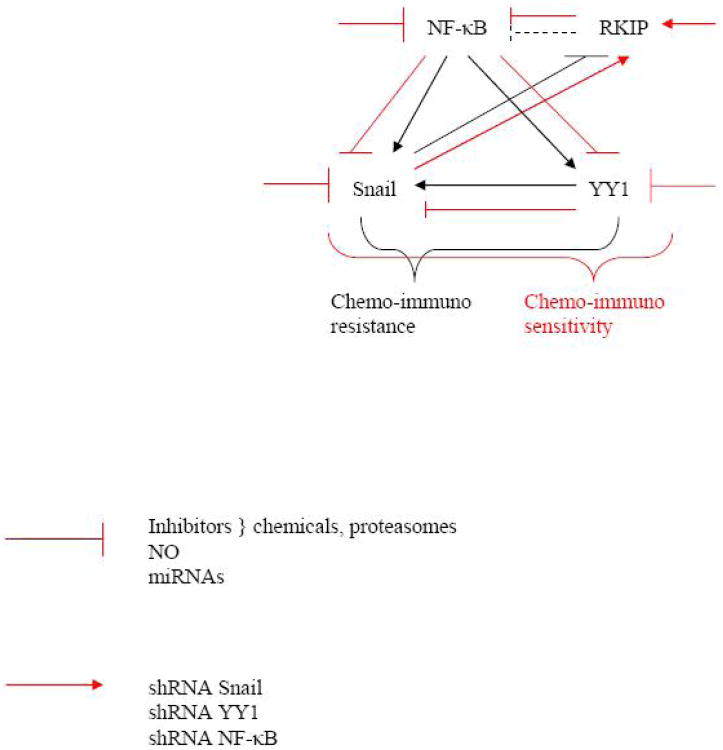Fig. 1.
This schematic diagram represents the constitutively activated and deregulated NF-κB/Snail/YY1/RKIP loop in cancer cells. The black solid lines demonstrate that activated NF-κB regulates the transcription and expression of Snail. Snail is a transcription repressor of RKIP and, therefore, there is minimal suppression of NF-κB by RKIP. In addition, NF-κB activates the transcription and expression of YY1. YY1 has been shown to positively regulate the transcription and expression of Snail. Therefore, the activation of NF-κB, Snail and YY1 along with the inactivation of RKIP results in the regulation of tumor cells chemo-immuno-resistance to cytotoxic agents. However, inhibitors of the above loop (red solid lines), such as inhibitors of NF-κB (by chemicals, proteasome inhibitors, NO, etc.) result downstream in the inhibition of Snail and YY1 along with the induction of RKIP. Like the inhibition of NF-κB, the direct inhibition of Snail or YY1 (by shRNA, inhibitors, etc.) will also result in the induction of RKIP and further inhibiting the NF-κB/YY1/Snail circuit. Altogether, the various inhibitors will result in the reversal of tumor cells chemo-immuno-resistance to chemo-immuno-sensitivity to cytotoxic agents. Overall scheme of the roles each of Snail. YY1 and RKIP m the regulation of tumor cell chemo-immuno resistance.

